The Mini Meadow


![]()

My pride and joy, the Mini Meadow is my name for a small patch of wildflowers I planted a few years ago. I made sure to select all native species, because I wanted to support as many native arthropods as I could. As of 2023, we are on year three, and its been amazing watching the mini meadow evolve. Year one was mostly Black Eyed Susans with a lone milkweed, year two saw the arrival of bee balm, false sunflower, and new england aster join in, and this year, the bee balm is looking like it will be the star of the show. Over time here, I will share photos of the Mini Meadow and its denizens (along with other insects from around my yard). Having land to do this on is a privilege, and I am thankful that I had the opportunity to do this. If you have land that you can plant native wildflowers on, I highly recommend it. You will be providing an ecosystem to countless tiny lives. (All pixels on this page by me, feel free to use!)
I am not a professional botanist or entomologist, please take everything I say here with a grain of salt! All photos by me.

______

Summer weather has never been my favorite as I'm not a fan of the heat, but the skies in summer are some of the best. We had a beautiful rainbow after a storm.
For the first critter, how about a visitor to the nearby flowers that inspired the mini meadow?
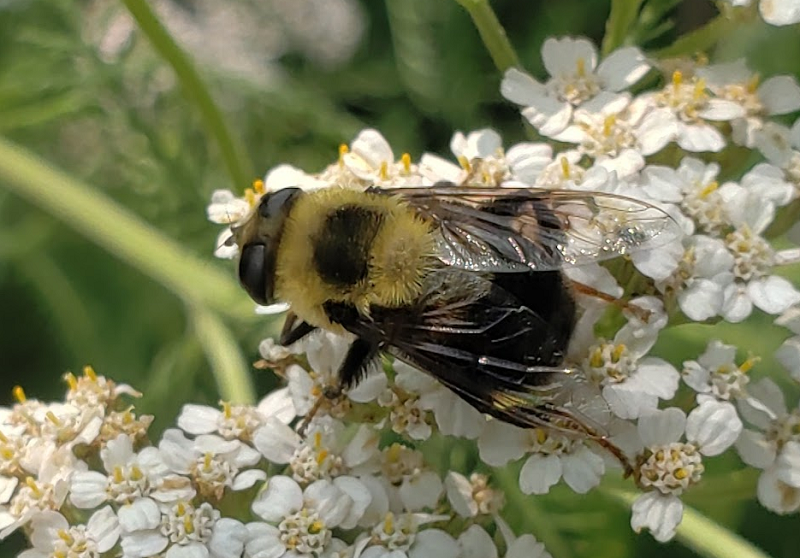
A few years ago I noticed lots of different insects visiting this patch of yarrow that sprung up, and this year is the first time I've seen this rather magnificent fly. Thats right. This is a fly! Specifically Eristalis flavipes, the orange-legged drone fly. This genus is full of flies that mimic bees. This kind of mimicry is called Batesian mimicry. The fly is trying to convince predators that it is a bee so they leave it alone. Lots of insects mimic bees and wasps, but this is one of the most convincing I've seen so far!
Can you learn to love a wasp?
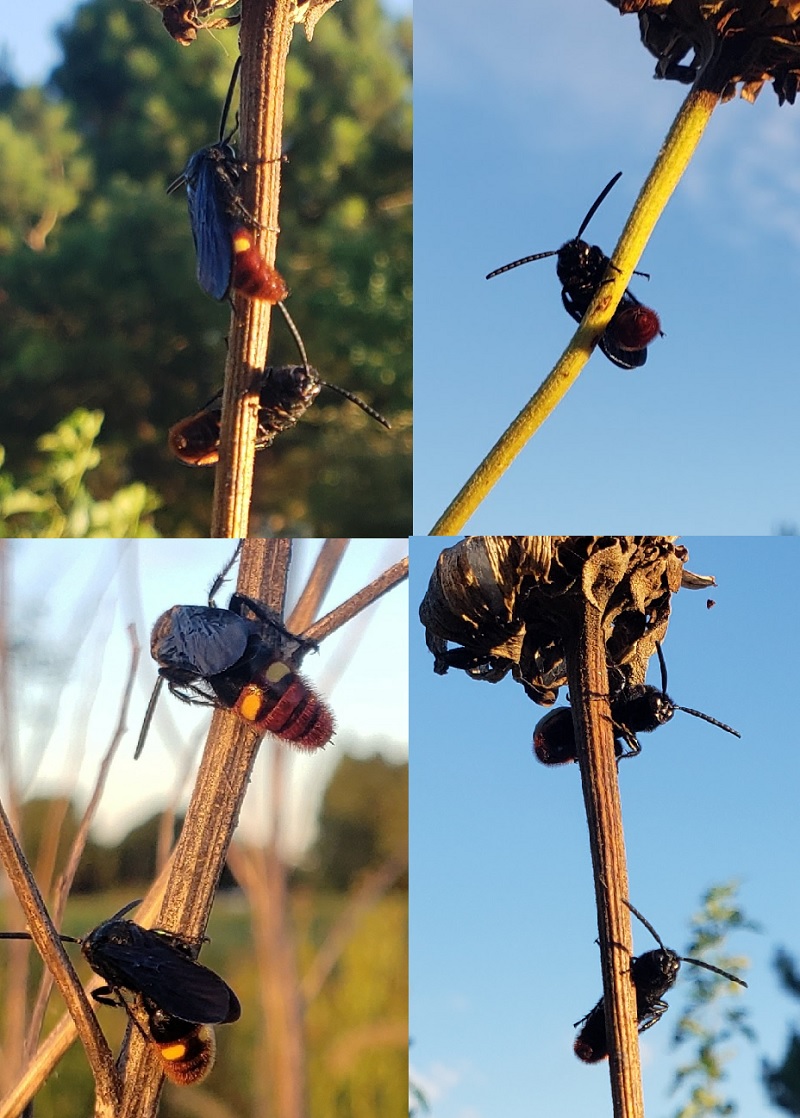
If I have a goal, a hope for this page, its to convince as many people as I can that wasps are worthy of our love and fascination. Its hard for me to look at these little Blue winged scoliid wasps (Scolia dubia) and not squee with adoration. I mean, look at their faces! Look at their fuzzy bums and reflective blue wings! The animals that we call wasps are a large group of insects in the order Hymenoptera, and the word 'wasp' itself is tricky as it doesnt denote one single group. Bees and ants, for example, are very much within groups we would consider wasps. Look up wasp phylogeny if you get a chance, its kind of bananas. Wasps are SUPER diverse, and most species will not, or in many cases CAN NOT sting humans. There is a wasp the size of an amoeba. I could sit here and list all the reasons wasps are rad as hell and it would take me all morning. But I will say this much, wasps are highly specialized hunters, and are vital predators that control pest species that would wreak havock without them. We owe wasps more than we realize. I'll try not to soap box too much about how much I love these guys, so I'm getting it out of the way early. I hope I can convince you to give them a second thought.
Tiny Skipper
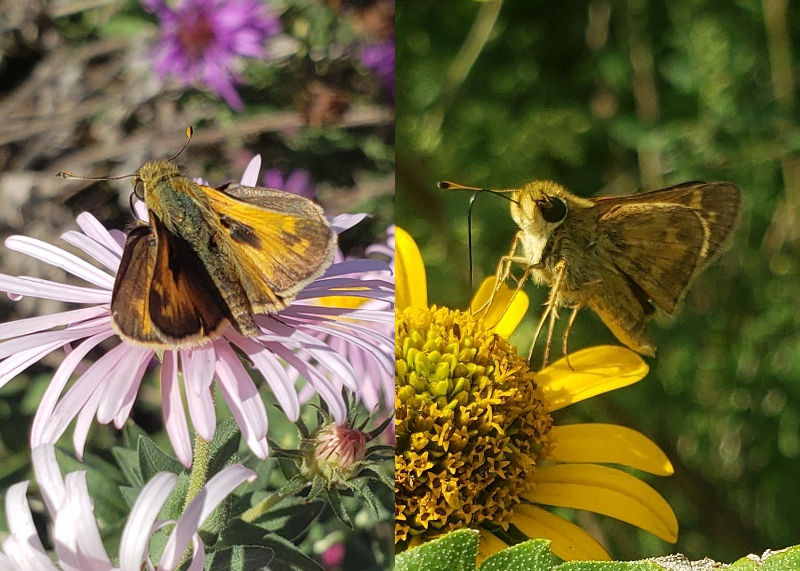
Sachem (Atalopedes campestris) are one of the most common lepidopterans that visit my flower patch. These tiny, adorable skippers flit about, sometimes two to a flower. I think of them as chibi butterflies, with their big heads and adorable eyes.
Pray for Mercy
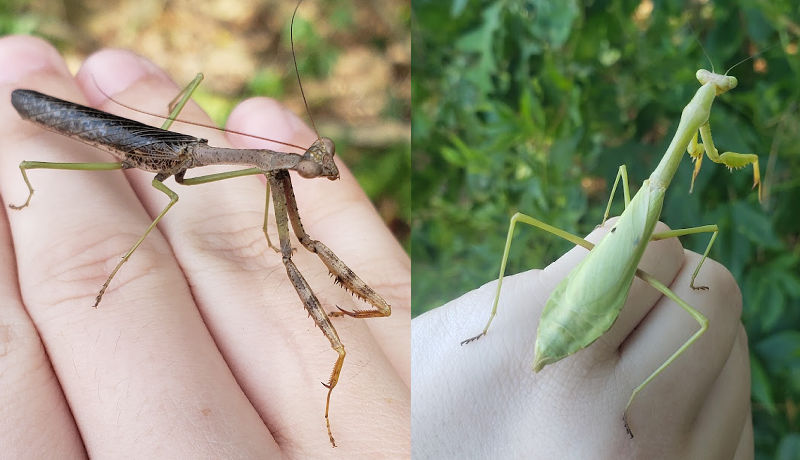
Male (left) and female (right) Carolina mantis (Stagmomantis carolina) are a native species of mantis where I live in New Jersey. Mantises are some of my favorite insects, there is something so captivating about how they look directly at you. You can see them turn their flexible neck around to observe their surroundings and plan a route. Even smaller species are impressive hunters, relying only on their strength and sharply serrated forelegs to subdue prey. I love this species for its diversity of colors and sexual dimorphism, with males being small and slim with long wings, and females being larger with short, stubby wings. Ive found them in green, salt and pepper, and even mottled reddish brown. Not as large or commonly seen as the non native Tenodera species, seeing these magnificent insects is always a treat.
A Visit from a Fairy
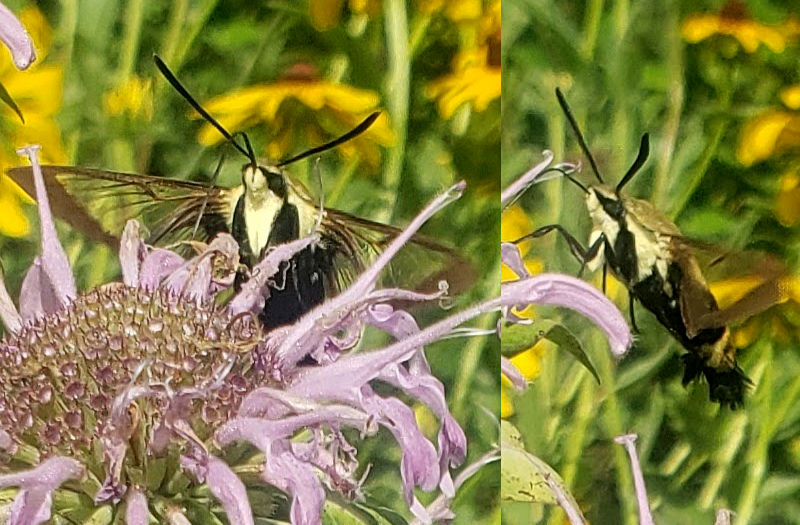
I nearly shouted with glee when I turned around and saw this Snowberry clearwing (Hemaris diffinis) feeding on some bee balm just a few feet from me. Absolutely adorable (with an adorable common name to match), I rarely get to see these wonderful little creatures. They're easy to mistake for a hummingbird from a distance due to their similar shape and hovering flight. Seeing one of these is always a highlight of the season.
Native Beeversity
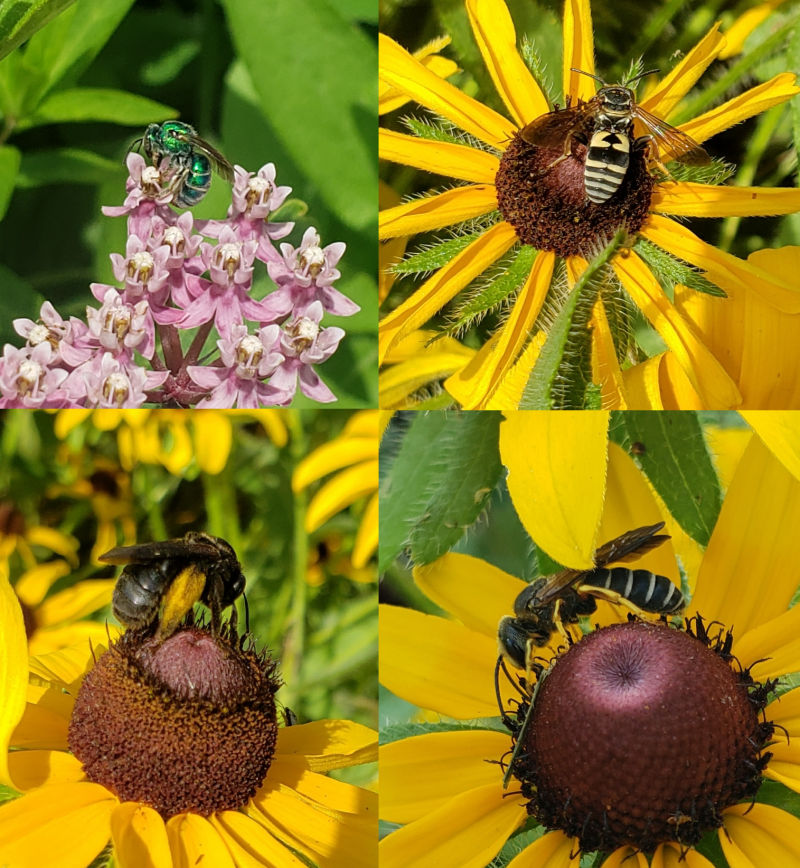
One of the most exciting things about the Mini Meadow is how much species diversity I've seen, especially with the bees. I've seen so many bees I've never seen before. The difference is astounding. Here are some lovely ones! Top Left: Augochloropsis metallica. Top Right: Triepeolus lunatus. Bottom Left: Melissodes bimaculatus. Bottom Right: Halictus parallelus.
______
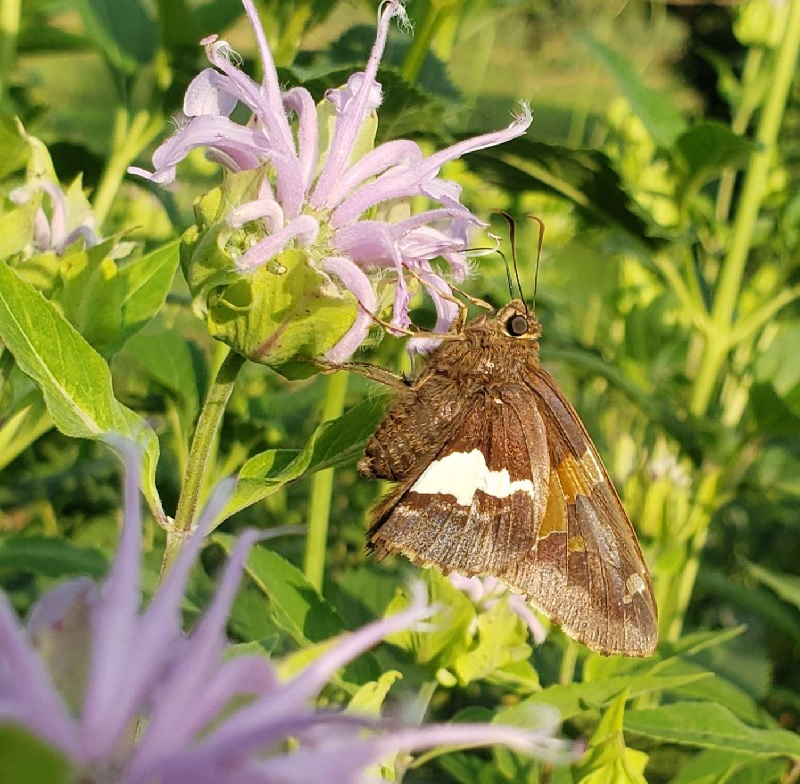
Cute little silver-spotted skipper (Epargyreus clarus) enjoying some bee balm.
______
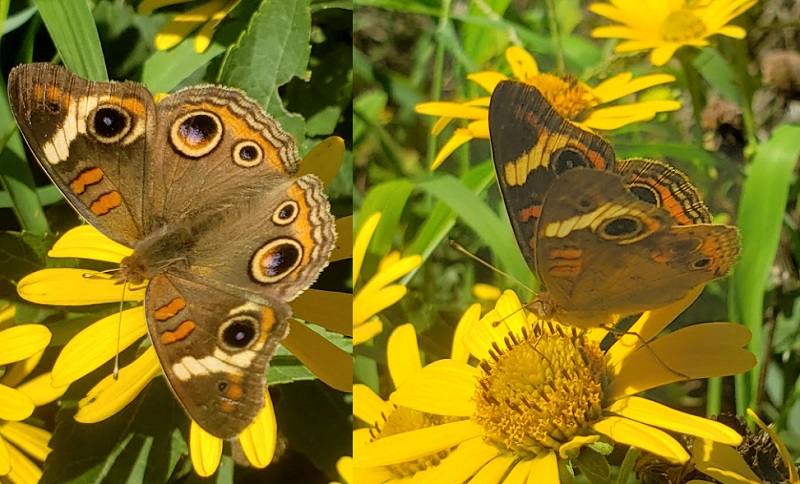
The common buckeye (Junonia coenia) is a lovely little butterfly with stunning eyespots. One thing I've noticed about these guys is they let me get really close and film and photograph them, moreso than other butterflies.
______
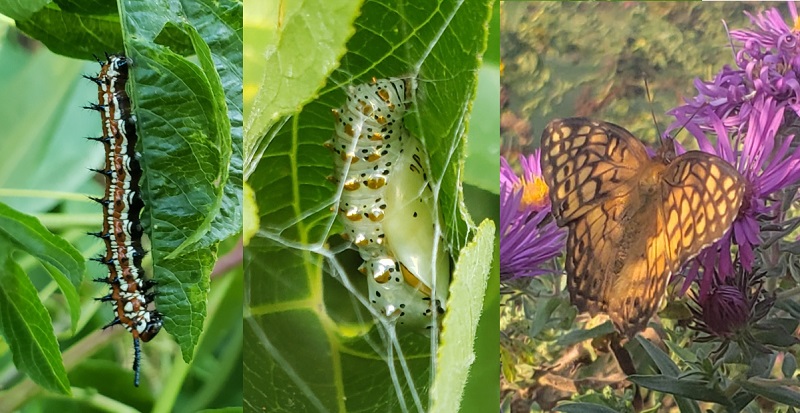
Variegated Fritillaries (Euptoieta claudia) are stunning through their entire life cycle, particularly their chrysalis, which is a pearly white decorated with metalic golden nubs and black speckles. They look more like jewelry in that stage than a living animal.